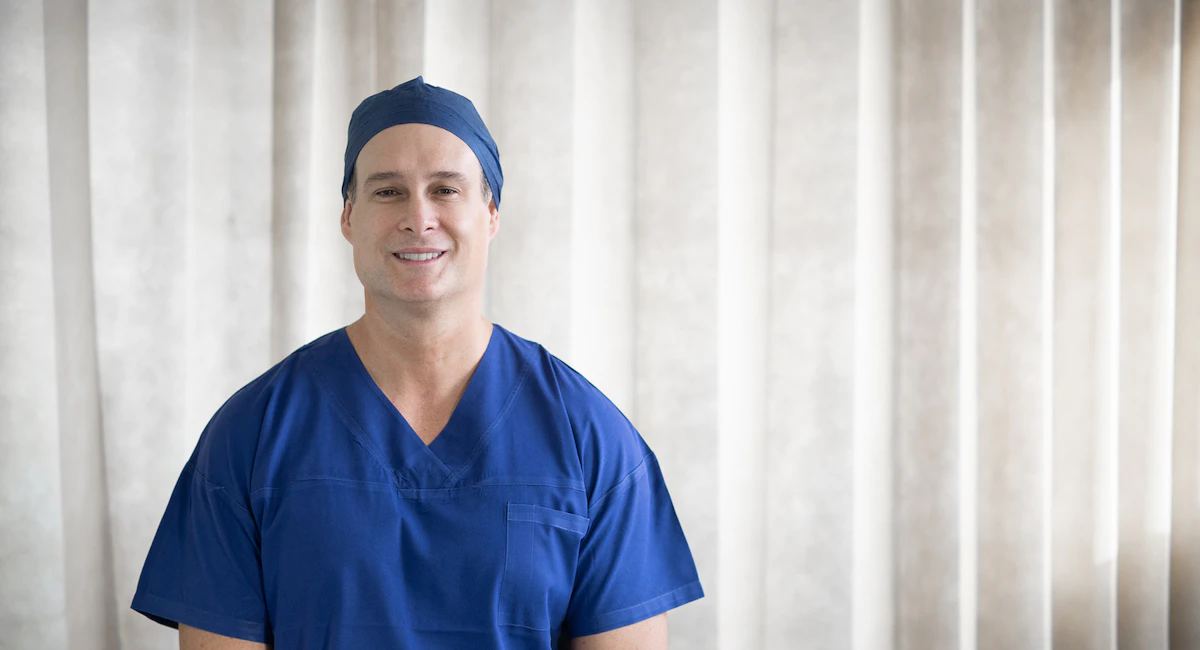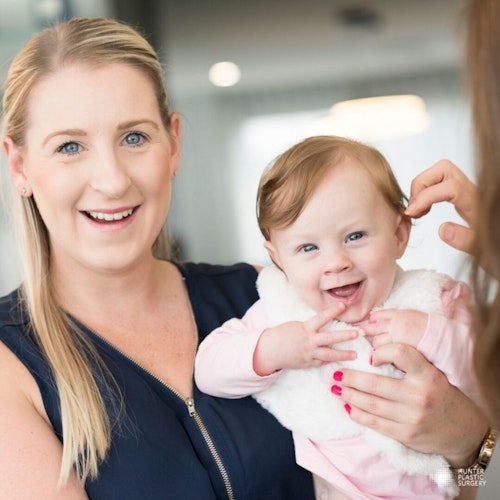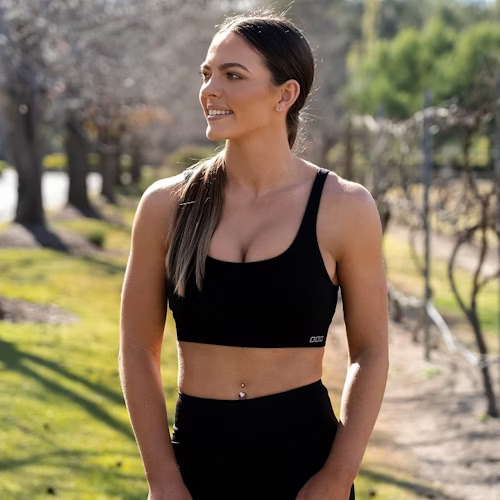Size does matter in breast implant selection! I’m known for producing ‘natural looking’ breast augmentations and we make sure we publish lots of results across our website and social media that reflect this. The vast majority of my patients choose implants between 295cc – 440cc.
My goal is to help patients achieve the look they want in a safe way that will look good not just in a selfie after 3 months, but also in 5 years!
But I’m still regularly asked to help a patient achieve a ‘porn star’ or ‘massive’ look or use very large implants on small patients because their friend had the same size.
So here is what I go through in response….
Increased immediate risks
The most common immediate issue with excessively large implants is the risk of the incision lines being under too much stress and opening up – sometimes leading to infections and removal of implants.
I used to get regular calls from local hospitals when there was a clinic in Sydney doing lots of budget breast augmentations (which is now subject to a class action) seeking my advice when this exact problem happened and the women had sought help when they returned to Newcastle. I would have to advise simply to remove the implant, treat the infection, let it all heal and then see a proper Plastic Surgeon to start again. So what seemed like cheap surgery become very expensive.
The other main issue is extreme pain. While most breast augmentation patients report discomfort after surgery as the breast tissue stretches out to accommodate the implants, very large implants obviously exacerbate this issue.
I’ve removed implants of up to 700cc from relatively small women who had surgery with cosmetic surgeons and they said from the outset they were in extreme pain which could not be addressed even with prescription pain relief and lasted weeks and weeks.
Problems in the longer term
These are the risks of excessively large implants in the longer term:
- Sagging – Just remember, having implants isn’t a gravity and ageing ‘Get out of Jail Free’ card. Yes, implants create a lift and structure that natural tissue simply can’t, but in the longer term gravity will do it’s work as the natural tissue and skin ages. The bigger the implant, the bigger the impact of gravity. And add on some babies or weight changes, and that process is exacerbated.
- Bottoming out – even when the pocket for the implant is tight and the internal and external sutures at the base of the breast are strong, it is a common problem for very large implants to drop down the chest over time. This can be seen as the scar ‘creeps up’ the breast as the implant falls downwards.
- Symmastia (or ‘mono boob’) – again, a problem that can occur over time when the implants are too large and while initially it looks great with close cleavage, the implants migrate closer and closer and then look like one large breast across the chest, requiring revision.
- Skin and tissue thinning – this process makes the three issues above worse and also leads to visible ripples as there isn’t enough tissue covering the breast implants. The widely accepted guide to implant selection by Dr John Tebbetts states that any implant over 350cc will increase the rate of thinning over time.
- Rib deformity – I’ve seen this particularly in revisions cases which initially involved very large implants. The pressure from the large implant has not only pushed out and down, but inward and caused damage to the ribs.
- Neck and shoulder pain – just like we see in patients having breast reductions, women who have excessively large implants find they get neck and shoulder pain and many have to seek help from physios.
So what is the right size for you?
This depends largely on the size, frame, existing breast width and other anatomical features, existing breast tissue, and skin condition of the patient. There are well accepted frameworks of breast implant sizes which are suitable based on a number of measurements and anatomical features I assess during my examination. That produces a range of options and then I work with the patient on an agreed range of sizes and projections for the procedure based on their goals.
During the operation I use sizers from that agreed range to make sure it is the perfect match to their body and goals.
We also offer a $100 Vectra simulation appointment which the vast majority of my breast augmentation patients have before seeing me (the $100 comes off my consultation fee). It means a 3D camera is used to capture many of the measurements I refer to above and show a simulation of different breast sizes. This can be very useful for an initial discussion on what I am likely to recommend.
Here are some of the common questions I’m asked during consultations and my answers:
1. ‘But my friend got a 550cc, why can’t I?’
Does your friend have exactly the same height, weight, body type, breast measurements and level of skin elasticity as you? If so, then we can look at if that size would suit you (although given how many revisions I have done of women who went too big, especially during the cheap implant craze of a few years ago, that size may still not be suitable for you).
Remember that every implant will look different on different women. A 330cc may look very full on a petite woman of 150cm and 45kg, but small on a woman of 175cm and 80kg.
Below is an example of how the same implant size gives a very different result on different patients.

2. ‘Here is a photo I got from Instagram.. can you make me look like this?’
I’ll be frank and say that I am most often asked this by women in their late 30s and 40s who have had children (and more lax breast skin) and they are showing me a photo of a woman often 15-20 years younger who hasn’t had children who is either wearing a push-up sports bra or angled in a way that pushes their cleavage together. The simple answer is ‘no, I can’t make you look exactly like that patient.'
While I can help women of all ages improve the appearance of their breasts, I can not turn back time. The impact on breasts of time, gravity, babies and weight changes all mean that the very tight firm cleavage possible in a younger patient is often not achievable for older women. Can they still look dramatically better, I can’t make every patient 22 again!
3. Can I have fat grafting instead?
Fat itself is very soft and will not offer the lift and reshaping most patients considering an augmentation want. I often used the term, ‘apple sauce in a bag’ borrowed from my US colleague Dr Subbio. It will fill things a little, but given it’s texture and rate of loss after grafting, can’t do the work an implant can.
However, it can be very useful as use fat grafting in addition to an implant to provide extra coverage of the implant and can be useful to create the appearance of closer cleavage without having to add the extra size and weight of a larger implant.
In recent years fat grafting has grown in popularity. Part of this growth is because until the last few years our medical indemnity insurance would not cover fat grafting to the breast, so most prudent surgeons would not offer it.
Now medical insurers will cover it, more surgeons are offering it. But I’m yet to see a before and after of a fat grafting breast enhancement without an implant that still looks convincing more than a year or two down the track.
More on this issue can be found in this blog.
4. Ok, I've heard all that but still want an implant size you don't recommend.
Then I am not your surgeon this time. Just remember that revision surgery is complex and much more expensive that getting it right the first time. As I like to say, 'I don't do $6,000 breast augmentations, I fix $6,000 breast augmentations.'
For more information about breast implant revision, please visit our removal and replacement page.
Other blogs you might like:
- What size will this implant make me?
- What is Drop and Fluff?
- Fat grafting with implants or instead of implants
- One or two stage breast augmentation and lift
- How long do implants last?

Blog Author:
Dr Nicholas Moncrieff, Specialist Plastic Surgeon
About Dr Moncrieff
Dr Moncrieff focuses exclusively on breast reductions, breast lifts, breast augmentation, tummy tucks and body lifts.
He is one of only a handful of Plastic Surgeons across Australia with this sole breast and body focus.
Dr Moncrieff has performed thousands of surgical procedures over more than two decades in medicine. Over 20,000 of these procedures have been in Newcastle.
More information about Dr Moncrieff is available here.



